INCLUSIVE DESIGN AND MARKETING: ALL YOU NEED TO KNOW
If you create something just for your own sake – like a painting to hang up on your bedroom wall – it could be however the heck you’d like it to be. You do you!
But if it’s for a set of consumers, then knowing those consumers is paramount to your design process. That includes their age, lifestyle, languages, race, gender, culture, religion, physical characteristics, behavioral traits and preferences. And although this is a tenet of any kind of design, countless designs that have been designed in the past have failed to account for sections of their own potential consumers without any such intention of their designers. A recent, infamous, eyebrow-raising case of this sort has been the one with Google Photos automatically categorizing the photos of a black couple into an album titled ‘gorillas’.
There is found to be a legitimate reason for such exclusions of sections of consumers in design. It’s called unconscious bias. We all have our own perspectives, stereotypes and mental models to simplify our understanding of various things in the world. There are things we just happen to take for granted. And when they come into play in our design process, we unintentionally end up designing for only the consumers who pass through our mental filters.
Unconscious bias is something every single person is guilty of having. It therefore becomes necessary to consciously counter it whenever we sit to create anything that we’re putting out into the world.
How do we do that? With inclusive design. And how do we define inclusive design? Read on…
What is Inclusive Design?
Okay, here’s the definition or meaning of inclusive design:
Inclusive design is an ongoing practice in the design process, to create ways to accommodate the characteristics, abilities, experiences, viewpoints and preferences of consumers that weren’t taken into consideration before.
This practice helps us design products and services that are accessible to anyone who consumes them, regardless of their background. And it’s applicable to all kinds of creation, be it of art, architecture, engineering or even what we do: advertising and marketing.
Implementing the practice of inclusive design could mean something as simple as using stock photos of racially diverse groups of students on a university’s website to make everyone feel like they belong there. Or it could mean something as complex as redesigning the facial recognition system of the Google Photos app to identify black people as black people. The ultimate goal remains the same: to increase inclusivity.
Why Is It Important?
‘Inclusivity’ may sound like just another new-age political buzzword to some. But when it comes to inclusive design, it really is a lot more than that. Incorporating the principles of inclusive design in the creation of a product and its marketing content, could literally and directly increase the product’s sales and for no great addition in costs. Because one small design change that makes the product more inclusive, could make entire sections of your potential consumers decide to purchase it.
For example, it could be ALL the consumers of the age group of 60-80, or ALL those who have a disability like hearing impairment. Just think: how much does the subtitling or dubbing of a hollywood movie cost, and by how much does it increase the movie’s viewership on an international streaming platform like Netflix? Dubbing or subtitling is an inclusive design consideration which makes the product accessible to people who don’t speak English. How many are they? Well… a LOT!
The Principles of Inclusive Design
Ight… Now that we’ve covered the whats and whys of inclusive design, let’s have a look at its principles to know HOW to actually put it into practice.
Here are the key principles to adhere to as your inclusive design guidelines:
- Prioritize inclusivity early on in the design process
Inclusive design thinking is mainly a mindset – an intent. And it is best to have that mindset right when you’re about to start designing something from scratch. Heard of the saying ‘Prevention is better than cure’? Same logic. Prevent the excluding design features rather than fixing them later. That’s pretty much why the inclusive design process is an ongoing one.
- Fix your biases and assumptions about your audience
Conduct elaborate market research to know everything you can about the people you’re designing for. The more you leave things to assumption, the more you let your unconscious biases affect your design. If you’re creating buyer personas, create enough of them to cover all sections of your TG.
- Look for perspectives other than your own
Inclusive design is always a collaborative effort. Create a diverse team of designers to work on your design, and let a diverse set of consumers test its consumption and share their opinions on it. It’s best if they are as diverse as your design’s target audience itself. Because whenever we design, we put a lot of ‘us’ into it, even if unintentionally.
- Realize the situational changes
Exclusion can be not just due to your consumer’s background, but something highly situational. Consider the various environments and contexts in which your consumers may consume your product/service and design it to be as accessible as ever in all those situations. Ever used umbrellas that block the rain but flip in strong winds? Then you know it.
- Identify the points of exclusion
Understanding how and why consumers are excluded can help you establish effective steps towards making your design more inclusive. Look at all the points of exclusion in your existing design as opportunities for improvement. Because that’s what making a design more inclusive is: improvement.
- Consider design as your solution
You need to eliminate all points of exclusion by making changes in your design. Those points of exclusion are flaws in the design, and you need to get rid of them by modifying the design and not by giving its consumers ideas to adapt to it.
- Extend your solution to everyone
Transcripts or closed captions of video/audio content designed for people with hearing impairment can also benefit everyone in a noisy place, e.g. a crowded train. Larger font sizes can not only cater to people with visual disabilities, but also a person driving a car.
When you design a solution for one set of people in mind, see if you can extend it to other people who could benefit from it.
Examples of Non-Inclusive Design
To get a better idea of the scope of goof-ups possible by of avoiding inclusive design, let’s see a few real world examples:
- Speech-to-Text Software
Speech-to-text tools convert spoken words into text. They can make a huge positive difference for people who can’t type due to disabilities like blindness, dyslexia, hand tremors and arm injuries.
In 2020, scientists from Georgetown and Stanford Universities published a study which examined mainstream speech-to-text software to assess potential racial disparities. And they found that such tools misunderstood and mistranscribed black people nearly twice as often as they did with white people. The average rate of error was about 35% for black people and about 19% for white people.
Why? Because of their different accents, pronunciations and native languages.
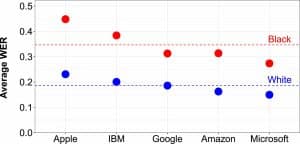
Source: PNAS
- Car Seat Belts and Seats
In the 1960s, crash test dummies for cars were modeled considering the average man in terms of weight, height and stature. Out of 5 crash tests conducted to determine if a car is safe for sale, only 1 included a woman’s dummy. And that too was only placed in the car’s passenger seat. Therefore, the design decisions made to improve human safety during car crashes were mainly suited for men.

Source: Evoke
Many women have to move their seat forward, just to reach the steering wheels and foot pedals, which is unsafe. As per the National Highway Traffic Safety Administration, the people who need to sit 10 inches or nearer to steering wheels are more likely to face fatal or serious injuries.
And data gathered by Motor Research suggests that female drivers are 47% more likely to be seriously injured in car crashes.
- Automatic Soap Dispensers
In 2015, a YouTube video showed an automatic bathroom soap dispenser which successfully detected light skin, but not dark skin.
In 2017, a Twitter user named Chukwuemeka Afigbo tweeted a video of another automatic soap dispenser failing to detect a dark-skinned person’s hand. When that individual held a white paper towel below the soap dispenser, the soap was dispensed.
- Algorithmic Photo Checkers
Algorithmic photo checkers are commonly used to examine people’s photos and verify their identities when they fill out online applications.
But in 2016, a Chinese guy named Richard Lee faced rejection while attempting to renew his passport online with the New Zealand Department of Internal Affairs. Simply because their algorithmic photo detector determined that his eyes were shut, with an error message saying “subject eyes are closed” when he tried uploading his photo. Were they actually shut? See for yourself…
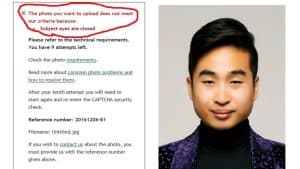
Source: Quartz
Examples of Inclusive Design
Let’s give it up for and learn from some of the real world designs that scored 10/10 when it comes to inclusivity. Here are some noteworthy inclusive design examples:
- Accessible Mascara Applicators by Grace
Although the needs of people with disabilities are catered to in some areas of design, they’re unfairly ignored in many others, e.g. in cosmetic products like makeup applicators. However, Grace is a brand that designs makeup applicators with improved grip and greater ease of use, just to make them more accessible for such people.
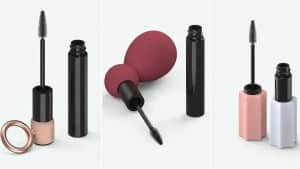
Source: Trend Hunter
The Safe Grip provides a rubbery but flexible grip that can be attached to a slim mascara tube to get more surface area to hold onto. The Ring Grip can affix to mascara caps as well, helping users to comfortably hold onto the applicator and avoid dropping it.
- Diverse Illustrations by Shopify
In 2018, Meg Robichaud, an illustrator at Shopify, wrote a Medium article on the shortcomings of their previous illustration guide. In that she stated that only changing the illustrated people’s skin colour to purple does not achieve diverse representation, and that the best way to make people feel more connected to their brand and products is to see what the lives of their merchants look like and design illustrations that reflect them.
Meg did a wonderful job of recognizing her own unconscious biases.

Source: Shopify UX on Medium
- Adaptive Accessories by Microsoft
Microsoft came up with a new suite of accessories like mice and keyboards designed to give disabled people better access to technology. The new adaptive accessories by Microsoft support 3D printed add-ons which enable consumers to customize each and every piece as per their needs and create setups that are ideal for them. That’s inclusive design for disability done right!
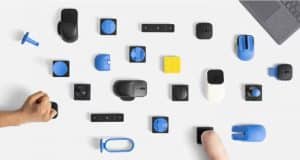
Source: Microsoft
- Gender-Neutral Bathrooms
Gender-neutral bathrooms are becoming increasingly common in public buildings across the United States of America, Canada, China and more countries. As per Yelp, over 160,000 businesses in the United States of America have chosen to make this change and install gender-neutral bathrooms. It simply ensures an inclusive space where individuals do not have to label their gender and make a choice based on it.
What Is Inclusive Marketing?
Inclusive marketing is marketing that takes diversity in all its forms into account. Inclusive marketing is good, effective marketing. And marketing that isn’t inclusive is simply bad marketing. Because inclusive marketing aims at creating marketing strategies and content that resonates with all communities, big or small, that make up a brand’s target audience. In other words, it targets every single individual in the target audience, making them feel they’re being personally addressed. And that’s what ensures maximum sales.
To put it simply, inclusive marketing is what declares that your brand is for EVERYONE in its target audience. It isn’t something nice that brands can choose to do, going out of their way. It’s something they must do and should have always done, for their own good.
5 Principles of Inclusive Marketing
Wondering how to ensure that your marketing is inclusive? Just keep in mind these basic principles of inclusive marketing:
- Your Business Is a Part of Your Brand
Communicating your brand’s values without incorporating them into your business seems hypocritical to consumers, ruining your brand’s trust. The values you communicate should be evident throughout your business. And inclusivity is one of them. In simple words, practise what you preach.
- Representation Is Crucial
Representation is the noticeable presence of diverse identities in all the marketing content you put out. And it matters because everyone wants to see themselves reflected in the media – to feel like they’re heard and that they belong. And in the case of marketing – to feel like what you’re marketing is truly for them. So make sure you ensure it.
- Appropriation Must Be Avoided
Never take or use any aspect of a minority culture in your marketing without researching and honoring its true meaning and history. The intention to draw from people’s cultures, traditions and personal experiences is valid, but only if your efforts aren’t half-baked.
- Challenging Stereotypes Is a Good Way to Go
Avoiding stereotypes is essential for inclusive marketing. But countering them is even better! The people who are stereotyped will love you for it, and so will anyone who is empathetic for them. So go against standardized ideas that represent a prejudiced attitude, oversimplified opinion or uncritical judgment. You can create entire campaigns around it.
- Authenticity Matters
Overly contrived diversity looks insincere. People can spot ‘token inclusivity’ from a mile away. The best way to avoid this is by either telling real, relatable stories or fictionalized ones that stem from meaningful consumer insights. If people can’t relate to what you’re saying, they may scoff and turn away even if they’re represented!
Now, let’s talk about inclusive marketing campaigns…
Inclusive Marketing Campaigns That Got It Right
All marketing should be inclusive. But there can also be marketing campaigns that put DEI (Diversity, Equity and Inclusion) up front and center in a sensitive way. Here are a few examples of those for your inspiration:
- #LikeAGirl by Always
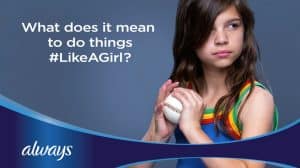
Source: Effie
In 2014, Always interviewed a set of men and women of different ages and asked them what it means to run like a girl, throw like a girl and so on. Their campaign explored why doing anything “like a girl” was often used as an insult, and it reclaimed the traditionally degrading phrase into something empowering. It successfully made young girls believe that it’s great to be female – that doing anything “like a girl” is doing it well. The best part is that their commercial encouraged its viewers to share their own stories with the hashtag: #LikeAGirl.
- #AsEarlyAsFive by Dove
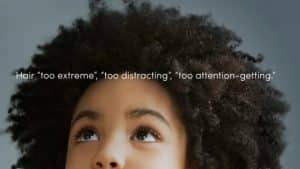
Source: Essence
1 in 5 black children, who are as young as 5, have faced hair discrimination. Black children are often made to conform with school hair policies. Failing to do so, they risk missing out on educational opportunities. Dove highlighted and opposed this discrimination with their ‘As Early As Five’ video campaign. And we cannot think of a better brand to have done it!
Inclusive Marketing Campaigns That Got It Wrong
There have also been cases of brands intending to promote inclusivity, but achieving quite the opposite of it. Let’s see a few of them to know what NOT to do:
- Burger King UK on Women’s Day
On 8th March 2021, Burger King UK’s official twitter page tweeted five simple words with a period…
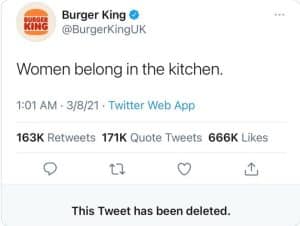
Source: USA Today
And they outraged people on Twitter like never before, for a very obvious reason: it’s one of the most sexist things one could say, and something that has been said a lot in the past. It’s an instant trigger.
The burger brand’s plan was to create some noise on the social media platform with this tweet and then post a follow-up tweet explaining the gender disparity in the restaurant industry of the UK, wherein a disproportionately large section of the workforce is male.
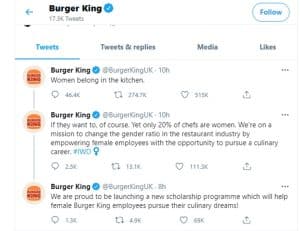
Source: Global News
But before that second tweet was posted, the damage was done.
So, although Burger King UK was trying to call out gender disparity, the way they did it sent their originally feminist idea for a toss. And the page had to apologise for it.
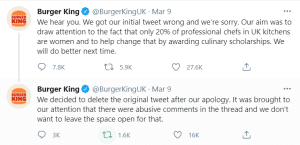
Source: People’s Daily
- Skin Love Weightless Blur Foundation Launch Ads by BECCA
BECCA, an Australian cosmetic products company, launched its new, inclusive Skin Love Weightless Blur Foundation, which came in a wide range of shades that matched with different skin tones.
Although the product was on point, BECCA took a shortcut (or rather a longcut?) in its product photoshoot by clicking images of hands of white models that were literally and uniformly painted in different shades to match those of their foundation.
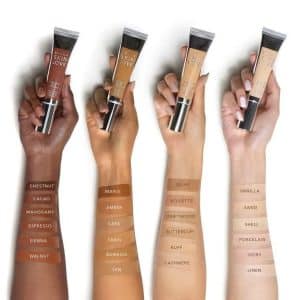
Source: Fashionista
How did the audience identify it? By the colour of the palms of the 2 hands on the left. Because people of colour have palms with a skin tone lighter than that of the rest of their arms.
What this shortcut made evident is the reluctance of brands like BECCA to hire dark-skinned models for brand photoshoots. And that actually is exclusion.
Inclusive Marketing Trends That Can Affect Your Brand
Now that big, global brands have made their marketing inclusive, consumers’ expectations too have started to rise. So here are the trends in inclusive marketing worldwide that you need to be mindful of while marketing your brand:
- The Necessity of Intentional Inclusion
Consumers today don’t think twice before challenging a brand that they don’t consider inclusive. So brands must explicitly ensure inclusion during the creation of marketing strategies and content. Because in this age, lack of inclusion is considered exclusion.
- The Disappearance of the Concept of ‘Normal’
Our diverse society is increasingly normalizing the idea that there is no such thing as normal. Every individual is unique, and there cannot be a fixed framework of what is normal anymore. So brand marketers need to make it a point to counter their unconscious biases towards what they think is normal or ‘a given’ among their brand’s consumers.
- The Need for Transparency
According to a survey by Sprout Social, 53% of consumers in the U.S. believe that brands only take a stand for public relations or marketing purposes. So brands must be transparent in showing consumers why they stand for something, or else consumers may think they’re simply trying to meet expectations. A brand’s inclination towards a social cause must have a good reason that is made evident. It should naturally fit with the brand’s story and ethos.
- The Recognition That Inclusive Marketing and Inclusive Culture Go Hand-in-Hand
Behind the face of a company’s inclusive marketing must be an inclusive company culture. Organizational values must match brand values. Workplaces must be inclusive and workforces must be diverse. It’s good for brands in every way as inclusive marketing becomes easier to achieve that way. The workforce has more access and exposure to different cultures and lifestyles, and there are lesser unconscious biases left to tackle.
Some of the Brands Getting Inclusive Marketing Right
While there are countless brands that have prioritized inclusive marketing, here are some big ones that do it in ways not many can think of:
- Procter & Gamble
P&G ads do include diverse people, but they also tell stories with powerful messages on equality, tackling controversial issues and discussing topics related to diversity.
One great example of them is their Emmy-winning ad titled ‘The Talk’, which corresponded with their ‘Black is Beautiful’ and ‘Proud Sponsor of Moms’ initiatives.
Google launched a literal training course that addressed issues of under-representing or misrepresenting people of different backgrounds, just to ensure diversity in its marketing campaigns.
Consequently, Google began making more thought-provoking campaigns, such as the Pixel 2 commercial titled ‘The Picture-Perfect Life’. It shows photos of real Google Pixel users from various backgrounds while addressing the challenging topic of mental illness, too.
- Coca-Cola
Coca-Cola is the brand that embraced diversity before it was a thing in marketing. The company launched its “I’d Like to Buy the World a Coke” commercial back in the ‘70s, filming young adults from around the world singing that jingle. It united people from different races and ethnicities for the common interests of Coca-Cola as well as world peace. It showed that although people come from diverse backgrounds, they have something in common.
Do you wish to have an integrated innovative marketing model so that your brand resonates with its entire target audience? That’s a good start. Because the first and most crucial step in inclusive marketing is to consider implementing it! Pop Communications can take it from there. We can create an inclusive marketing strategy for you and make you loads of compelling social media posts, Google ad campaigns, websites and everything else your brand needs to make some noise and sell more.
Do get in touch…
Email: [email protected] | Call: +1 647 846 6601


